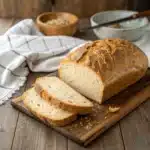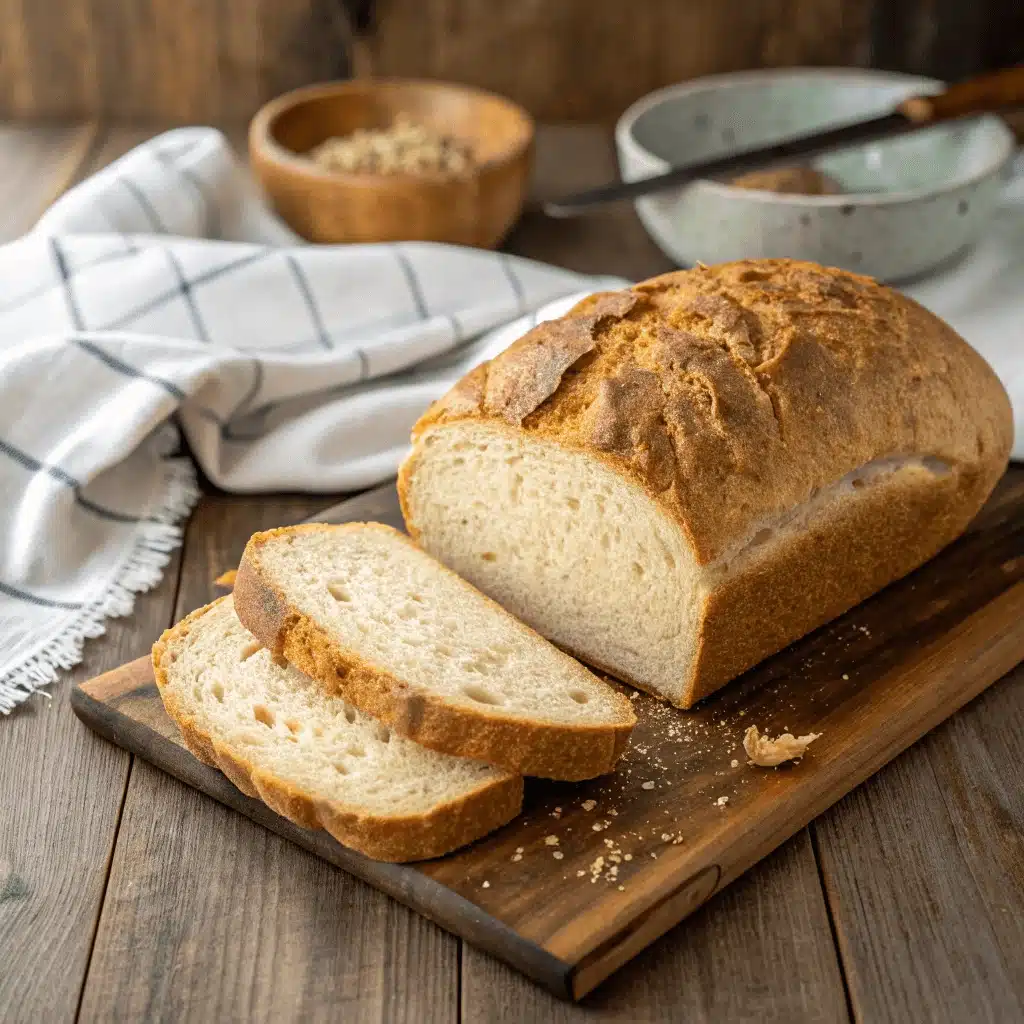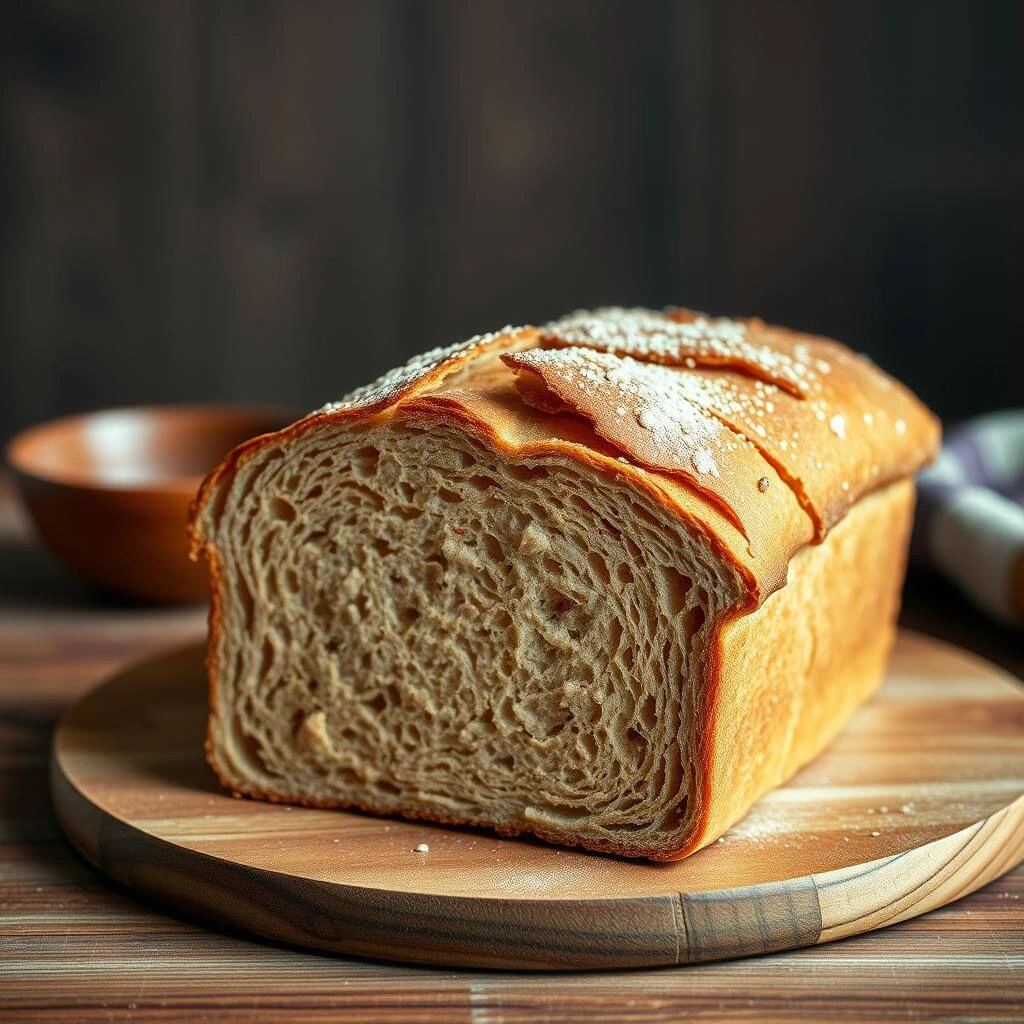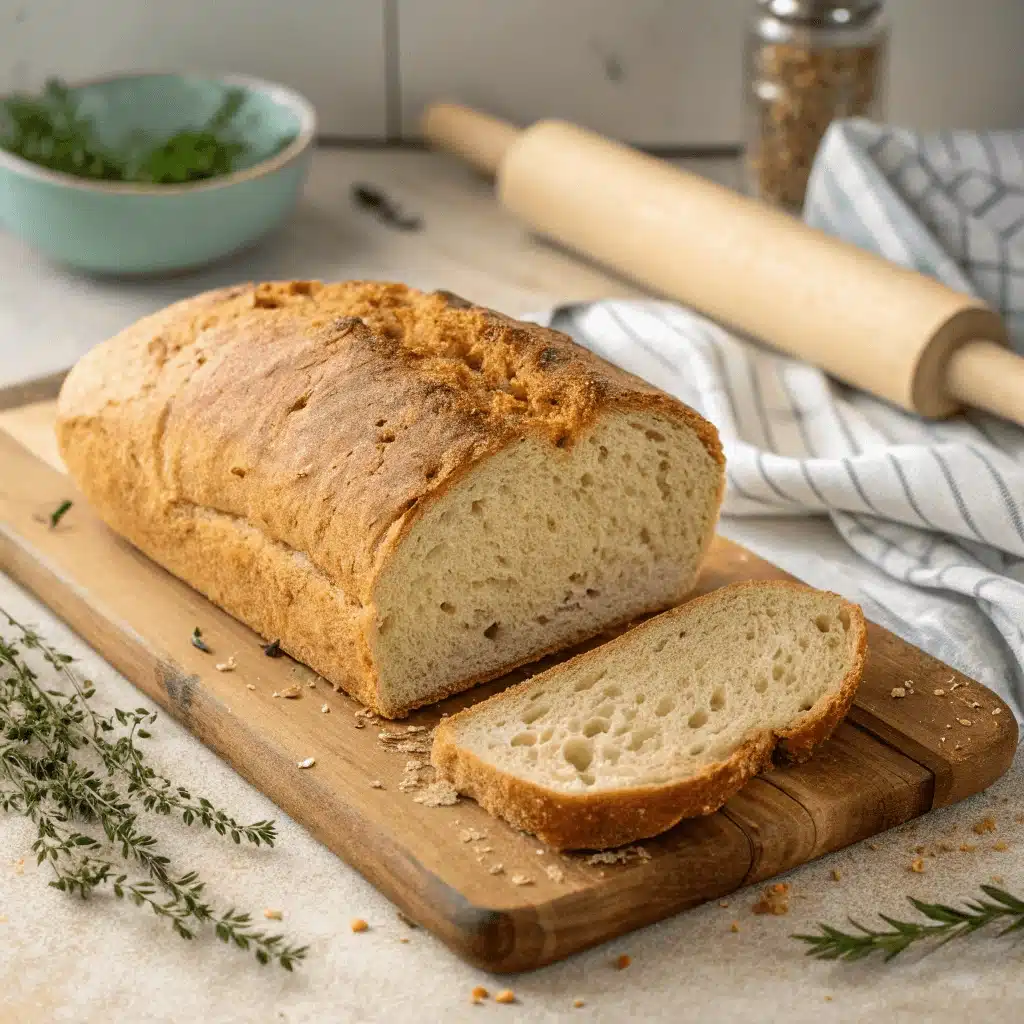Table of Contents
Table of Contents
The Ultimate Guide to Low Carb Bread: Your Gateway to Guilt-Free Baking
Hi, I’m Alice Thompson, the heart behind Deliciousavors.com. Growing up in Madison, Georgia, my fondest memories are of family and friends gathered in our kitchen, sharing laughter and good food. I’ve always believed that every dish tells a story, sometimes with a side of burnt biscuits! After years of exploring Southern kitchens and picking up flavors from roadside diners, I love putting a creative twist on classic recipes. This low carb bread has become one of my most requested recipes, perfect for anyone wanting to enjoy bread without the carb guilt. Whether you’re new to low carb baking or a seasoned pro, this recipe will become your go-to for satisfying, delicious bread that fits your healthy lifestyle.
I’ll never forget the first time I made low carb bread in my Madison kitchen. Growing up, our family table was always graced with warm, fluffy biscuits that filled the house with the most wonderful aroma. When I decided to embrace a healthier lifestyle and reduce my carb intake, I thought I’d have to say goodbye to those cherished bread moments forever. But then I discovered low carb bread, and it changed everything. After countless experiments, flour-dusted counters, and yes, a few spectacular failures, I finally cracked the code to creating delicious, satisfying low carb bread that rivals any traditional loaf. This bread has become a staple in my kitchen, allowing me to maintain my health goals without sacrificing the simple pleasure of a good sandwich or slice of toast. Today, I’m sharing everything I’ve learned about crafting the perfect low carb bread that will make your taste buds dance with joy.

Low Carb Bread: 5 Amazing Recipes for Perfect Healthy Baking
- Total Time: PT1H0M
- Yield: 12 slices
Description
The perfect low carb bread with amazing texture and just 2g net carbs per slice. Tastes just like traditional bread!
Ingredients
2 cups almond flour
1/4 cup coconut flour
4 large eggs
4 oz cream cheese, softened
2 tbsp psyllium husk powder
1 tsp baking powder
1/2 tsp salt
1/4 cup warm water

Instructions
Étape 1: Preheat oven to 350°F and line loaf pan with parchment
Étape 2: Whisk eggs until light and fluffy
Étape 3: Beat in softened cream cheese until smooth
Étape 4: Combine dry ingredients in separate bowl
Étape 5: Fold dry ingredients into wet mixture gently
Étape 6: Add warm water and mix until just combined

Étape 7: Let batter rest 15 minutes
Étape 8: Pour into prepared loaf pan
Étape 9: Bake 45 minutes until golden brown
Étape 10: Cool completely before slicing
Notes
Store in refrigerator up to 1 week
Freezes well for up to 3 months
Toast slices for best texture
Let cool completely before slicing to prevent crumbling
- Prep Time: PT0H15M
- Cook Time: PT0H45M
- Category: Bread
- Method: Baking
- Cuisine: American
Finding the Perfect Low Carb Bread Recipe for Your Kitchen
Creating exceptional low carb bread starts with understanding the fundamental differences between traditional and carbohydrate-reduced baking. Unlike conventional wheat flour, low carb bread relies on alternative ingredients that provide structure without the hefty carb count.
The Foundation of Great Low Carb Bread
The secret to outstanding low carb bread lies in the perfect combination of almond flour, coconut flour, and psyllium husk powder. These ingredients work together to create a texture that’s remarkably close to traditional bread while keeping net carbs below 3 grams per slice. Most successful recipes incorporate eggs as both a binding agent and moisture source, while cream cheese or Greek yogurt adds richness and helps achieve that coveted bread-like crumb.
| Ingredient | Purpose | Carb Impact |
|---|---|---|
| Almond Flour | Primary flour base | 2g per serving |
| Coconut Flour | Absorbs moisture, adds structure | 1g per serving |
| Psyllium Husk | Binding, elasticity | 0g net carbs |
Essential Techniques for Low Carb Success
Temperature control plays a crucial role in low carb bread success. Baking at 350°F typically produces the best results, allowing the interior to cook thoroughly while developing a golden exterior. Additionally, letting the batter rest for 15 minutes before baking allows the psyllium husk to fully hydrate, creating better texture and preventing crumbly results.

Exploring the Best Low Carb Bread Options Available
The marketplace offers numerous low carb bread alternatives, each with unique characteristics that cater to different dietary needs and taste preferences. Understanding these options helps you make informed choices whether you’re baking at home or shopping for convenience.
Commercial Low Carb Bread Brands
Leading brands like Sola, Carbonaut, and ThinSlim Foods have revolutionized the low carb bread market. Sola Sweet and Buttery bread contains just 7 grams of carbohydrates per serving and closely mimics traditional bread texture. Carbonaut offers both white and seeded versions with 9 grams of carbs per slice, while their vegan-friendly formula makes them accessible to plant-based dieters.
Homemade Versus Store-Bought Benefits
While commercial options provide convenience, homemade low carb bread offers superior control over ingredients and freshness. You can customize flavors, adjust sweetness levels, and avoid preservatives commonly found in packaged versions. Furthermore, homemade versions typically cost significantly less, with ingredients yielding multiple loaves for the price of one commercial option.

Mastering Low Carb Bread Alternatives and Substitutions
Beyond traditional loaf-style bread, numerous creative alternatives satisfy bread cravings while maintaining minimal carbohydrate content. These substitutions open new culinary possibilities without compromising your dietary goals.
Vegetable-Based Bread Replacements
Large portobello mushroom caps make excellent burger buns, providing earthy flavor and substantial texture. Bell pepper halves create sturdy sandwich vessels, while cucumber rounds work perfectly for canapés and light snacks. Lettuce wraps offer the ultimate low-carb solution, containing virtually no carbohydrates while adding fresh crunch to any filling.
Protein-Rich Alternatives
Cloud bread, made primarily from eggs and cream cheese, delivers fluffy texture with only 2 grams of carbohydrates per serving. Cheese wraps, created by baking thin layers of cheese until crispy, provide rich flavor and virtually zero carbs. Deli meat wraps substitute traditional bread entirely, using sliced turkey or ham as the outer layer for sandwiches and roll-ups.

Achieving Perfect Results with Low Carb Bread Techniques
Success with low carb bread requires specific techniques that differ from traditional bread-making methods. These specialized approaches account for the unique properties of alternative flours and binding agents.
Mixing and Preparation Methods
Proper mixing prevents dense, heavy results that plague many low carb bread attempts. Start by whisking eggs until light and fluffy before gradually incorporating other wet ingredients. Separately combine all dry ingredients, then fold them gently into the wet mixture to maintain air incorporation. Overmixing develops tough textures, so stop as soon as ingredients are just combined.
Storage and Serving Tips
Low carb bread requires different storage methods than traditional bread. Refrigeration extends freshness for up to one week, while freezing preserves quality for three months. Slice the loaf before freezing for convenient single-serving portions. Toasting enhances flavor and texture, making day-old bread taste freshly baked. Additionally, warming slices in a dry skillet for 30 seconds on each side restores optimal texture without additional oils.

Frequently Asked Questions
Which bread is lowest in carbs?
ThinSlim Foods Zero Net Carb Bread contains the lowest carbohydrate content among commercial options, with zero net carbs per slice due to its high fiber content. For homemade options, cloud bread contains just 2 grams of carbs per serving, making it one of the lowest-carb bread alternatives available.
What is a good low carb replacement for bread?
Lettuce wraps offer the most versatile low carb bread replacement, containing virtually no carbohydrates while providing fresh crunch. Other excellent alternatives include portobello mushroom caps for burgers, bell pepper halves for sandwiches, and almond flour bread for traditional bread texture with minimal carbs.
Which Dave’s Killer bread has the lowest carbs?
How many carbs a day to lose weight?
Conclusion
Low carb bread opens doors to maintaining beloved food traditions while supporting your health journey. Whether you choose commercial options for convenience or embrace homemade varieties for customization, these alternatives prove you don’t need to sacrifice taste for nutrition. From cloud bread’s airy texture to almond flour’s nutty richness, low carb options satisfy cravings without derailing dietary goals. The key lies in experimentation and finding what works best for your taste preferences and lifestyle. Remember, the best low carb bread is the one you’ll actually enjoy eating consistently. Start with simple recipes, gradually exploring more complex variations as your confidence grows. With patience and practice, you’ll discover that low carb bread can be every bit as satisfying as its traditional counterpart.
Article updated 26 June 2025.
For more recipes, visit my Facebook page.

1 thought on “Low Carb Bread: 5 Amazing Recipes for Perfect Healthy Baking”